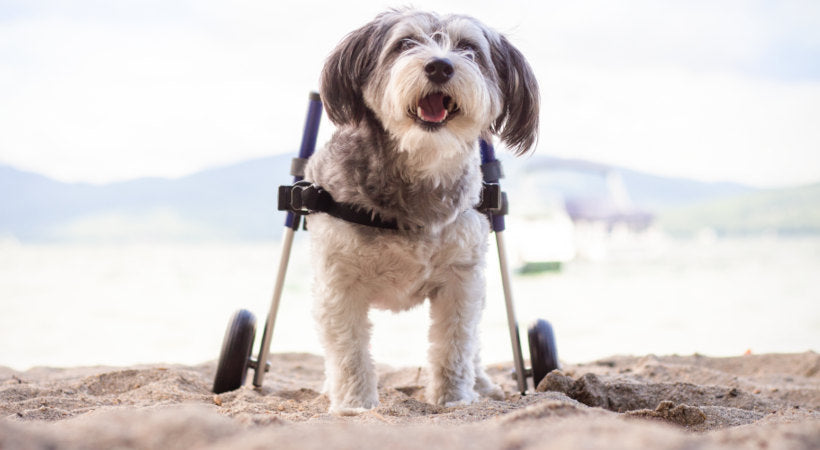Ataxia in Dogs: Causes, Symptoms, Treatment, and Care

How Does a Paralyzed Dog Go to the Bathroom?
Many paralyzed pets do not have control of their bladder or bowel movements. Therefore, caring for a paralyzed and incontinent pet comes with significant challenges. It is possible for paralyzed pets to pee and poop on their own, but they may no longer be able to control their bodily functions.
Why paralysis impacts a dog’s pottying
A dog often becomes paralyzed due to a spinal or neurological condition. When the communication in a dog’s spine and nerves is severed, the dog loses leg function and sensation as well as voluntary control of their body from the spinal injury and beyond. Unfortunately, in many paralyzed pets, this leaves them unable to control the bladder (or the contractions that are needed to help them pee) or be able to stop themselves from pooping.
Urinary incontinence can impact a dog in two ways: an inability to hold their urine and an ability to pee on command.
Can a paralyzed dog poop on its own?
A paralyzed dog can still poop on their own. Natural movement and exercise work together to encourage a dog to poop naturally. Unfortunately, many paralyzed dogs struggle to stop themselves from pooping, which can lead to frequent accidents. Since they can no longer feel the “urge to go” and cannot prevent the bowel movement, a disabled dog will poop wherever they are. It’s normal for a dog with mobility issues to start pooping inside their house suddenly, and they may not even realize they’re doing it.
A dog wheelchair is a great way to encourage a dog to poop naturally. Getting a dog in an upright standing position and encouraging them to be active can make it easier for a paralyzed dog to poop.
Paralyzed Dog Mobility Products
Caring for an incontinent dog
Senior pets who cannot stand or move without assistance may relieve themselves where they rest. Since paralyzed pets cannot move on their own, they must be checked regularly to avoid lying in their mess. Dog diapers prevent leaks but must be changed often to avoid skin irritation. Whether you diaper your dog or use an incontinence bed, an incontinent dog requires special care and attention.
Time is of the essence, and your dog’s cleanliness and hygiene are a top priority. If not caught quickly and cleaned, feces can cause sores and skin irritation around the dog’s anus. And in severe cases, improperly cleaned feces may even attract insects. Likewise, a dog’s skin in prolonged contact with urine can lead to rashes, painful urine burns, and cause UTIs.
7 Quick Incontinence Tips
- Learn how to express your dog's bladder.
- Get the incontinence tools you need, diapers are just the start!
- Keep your dog clean and dry.
- Rotate, move, and shift paralyzed dogs often to avoid pressure sores from forming.
- Get tips from your veterinarian! Your vet is a great resource and can teach you how to care for your pet's incontinence and keep them healthy.
- Learn the signs of a urinary tract infection. They can occur often, and repeated UTIs are not uncommon with paralyzed pets.
- Bring your dog outside regularly. Visits to favorite potty spots and regular exercise can encourage a dog to go naturally.
Bladder Expression: How to help a paralyzed dog to pee
Depending on the dog, urinary incontinence can range from a leaky bladder to a fully emptying bladder. Your dog’s recent paralysis can significantly change the level of care your pet needs. Speak to your veterinarian about your dog’s bladder health and how to care for your newly incontinent pet. A paralyzed dog or cat may no longer be able to empty its bladder without help. Expressing the bladder is when you manually encourage your dog to pee. You can help a paralyzed dog pee by gently pressing on the bladder and lower abdomen. Ask your veterinarian to show you how to express the bladder properly. Too much pressure or squeezing in the wrong location can cause bladder damage.
Expect to express your dog's bladder throughout the day. Most paralyzed dogs require their bladder to be entirely emptied multiple times daily to avoid urinary tract infections. Old urine left in the bladder can lead to UTIs.
Related Articles:











